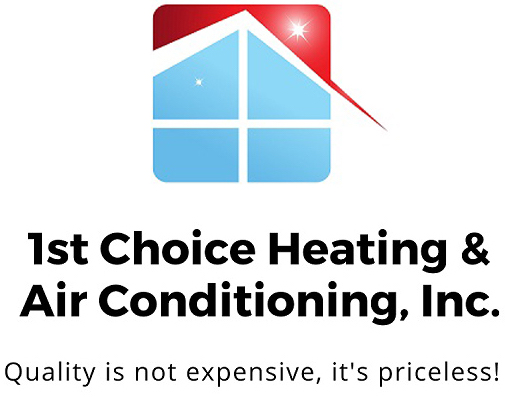
The global transmission of COVID-19 has likely flipped your typical calendar upside down.
When things feel uncertain you can take peace in knowing your home is your safe retreat. You’re likely spending more time there today. That’s why your indoor air quality is now more crucial than ever.
Did you know we can install indoor air quality products in your home that deliver hospital-grade filtration? These solutions can clear bacteria from your air, as well as allergens, odors and volatile organic compounds (VOCs).
Modern houses are tightly airtight, which is great for energy efficiency. But it also means your indoor air can be worse than the air outside. In reality, the EPA says it can be two to five times worse than outdoors. This can be problematic since we spend about 90% of our lifetime inside.
There are many factors that can contribute to poor indoor air quality, like cleaning products and air fresheners. These may lead to headaches and exasperate allergies and asthma.
There’s a combination of things you can do to better your air quality. Some include enhanced air filters, an air purification system or an ultraviolet (UV) germicidal light.
Not certain which solution is best for your home? Our knowledgeable professionals can conduct an indoor air quality audit. Based off of the outcome, we can then advise you on the most fitting solution for your household’s distinct needs.
Keep reading to discover more about the air quality products we sell.
Air Filtration
When browsing air filters, it’s important to review the MERV rating, or Minimum Efficiency Reporting Value. This gauges how successfully it filters air.
One of the most average and least expensive filters, flat fiberglass filters, are graded between 1 and 4 on the MERV system. Pleated filters are slightly better, ranking between 8 and 12.
We recommend buying at minimum MERV 13, such as the HC13 Media Air Cleaner, for the optimal effect. This filter gives cleaner air while reducing energy use.
High Efficiency Particulate Air (HEPA) filters are deemed the gold standard in air filtration, since they’re typically in use in hospitals. They’re effective at capturing 99.97–99.99% of indoor pollutants, such as pollen, pet dander and smoke.
Before getting a more powerful filter, give us a call at 949-762-8644. Our professionals can help you find the best option for your system.
Air Purification
Lennox provides some of the most advanced air purification systems you can purchase. PureAir™ S and Healthy Climate™ PureAir Air Purification Systems provide hospital-grade filtration while handling all categories of indoor air contaminants.
These powerful systems can eliminate:
- 99.9% of allergens, such as pollen, dust and pet dander.
- 95% of bacteria-sized particles, such as ones that contribute to strep throat.
- 50% of VOCs and odors within 24 hours.
UV Germicidal Lights
A UV germicidal light is installed inside your heating and cooling equipment. Its penetrating rays wipe out bacteria and mold within seconds.
If your family struggles with allergies or asthma, this equipment may offer relief. Especially if you are in an extremely hot part of the country where bacteria and mold grow quickly.
This light also has an added bonus for your HVAC unit. It might help it work for a longer period of time and operate more efficiently, as it keeps the internal pieces clean.
Our air quality engineers suggest using one of these lights with an improved filter, such as our Carbon Clean 16® Media Air Cleaner, for optimal outcome. This filter offers industry-leading MERV 16 filtration in addition to carbon-coated fibers to remove particles from your residence’s air. It fulfills this without restricting your comfort system’s airflow.
Whole-Home Humidifiers
Acquiring even humidity in your house might help keep your family in good health when it’s cold. It can aid sore throats, itchy skin and peeling lips, among further cold weather bothers.
If you aren’t aware of what your home’s humidity percentage is, we’ll figure that out while we perform your indoor air quality audit. While the range changes based off of outdoor temperatures, HVAC professionals typically suggest keeping it between 40–60 percent.
You can accomplish this ideal range with a whole-home humidifier. This system usually works with your furnace or air handler to give the right level of humidity throughout your residence. Some models, like the Healthy Climate® Whole-Home Power Humidifier, contain an included fan to spread humidity while your comfort system isn’t on.
Rely on the Experts for Your Indoor Air Quality Needs
At 1st Choice Heating & Air Conditioning, we’re committed to making your residence comfier. That’s why we offer Lennox air quality equipment, which are the most comprehensive solution on the market.
We’re also more than only your heating and cooling company. We’re concerned about the health of you and your family. That’s why our technicians are taking extra precautions when we visit your house.
To find out more about our air quality products, get in touch with us at 949-762-8644 or contact us online. Our skilled staff can also address any worries you might have with a professional arriving at your residence at this time.
—
*Based on in-duct testing that shows Healthy Climate® filters reduce airflow restriction. Greater restriction of airflow creates a greater load on a unit’s fan motor, increasing energy consumption.
